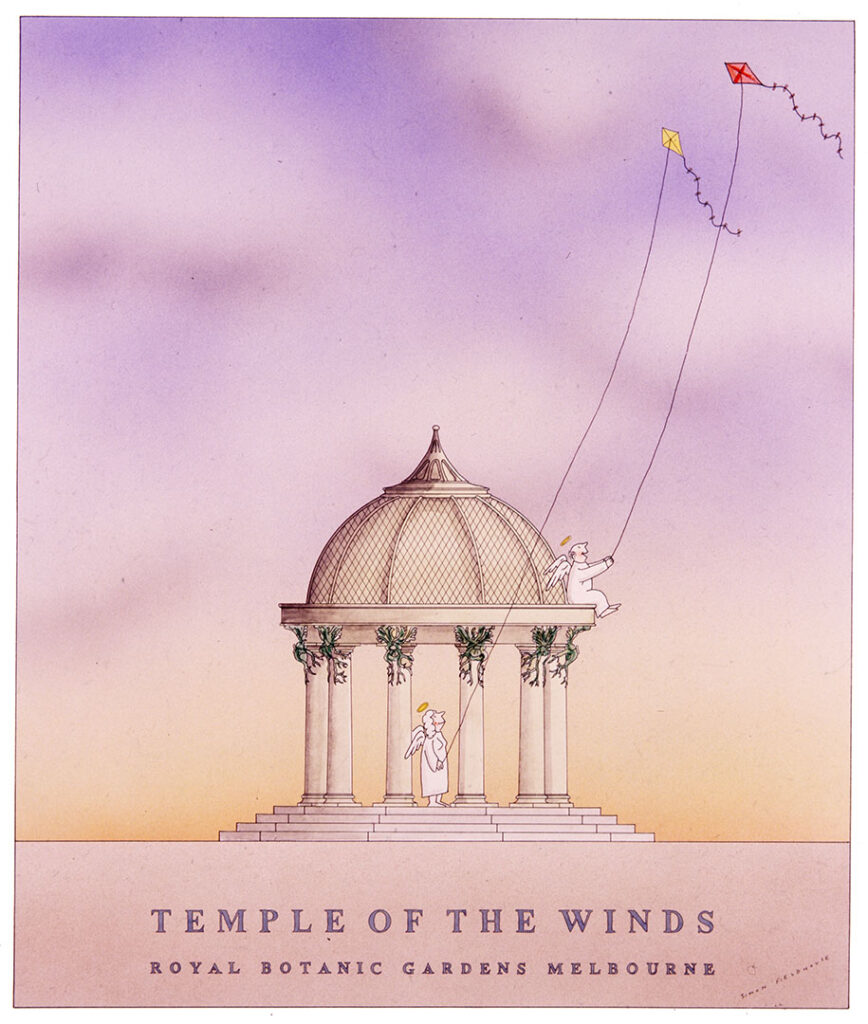
Temple of the Winds in Melbourne
Temple of the Winds in Melbourne. In the heart of Melbourne, Australia, stands a remarkable architectural marvel known as the "Temple of the Winds." This historic structure has not only withstood the test of time but has also become an iconic landmark that captivates visitors from around the world. With its rich history and timeless beauty, the Temple of the Winds is a must-see attraction that offers a unique blend of history, art, and natural beauty.
Historical Significance
The Temple of the Winds, built in 1844, is an essential part of Melbourne's history. It was designed by renowned architect John Smith, and its purpose was to serve as a weather observatory. Its name is derived from the eight classical figures, each representing a wind direction, positioned on its ornate columns. This feature allowed meteorologists to monitor wind patterns and weather changes in the early days of Melbourne's settlement.
Architectural Beauty
The Temple of the Winds showcases a fusion of Greek and Roman architectural styles. Its neoclassical design is a testament to the architectural prowess of the 19th century. The structure features beautifully carved Corinthian columns, intricate friezes, and a pediment adorned with exquisite sculptures. Its visual appeal, with stunning details that have been preserved over the years, continues to enchant art and history enthusiasts alike.
Scenic Location
Situated atop a hill in the Royal Botanic Gardens, the Temple of the Winds offers breathtaking panoramic views of Melbourne and the Yarra River. The location provides a serene escape from the bustling city, making it an ideal spot for picnics, leisurely strolls, or simply enjoying the serene atmosphere. The surrounding gardens are a haven for flora and fauna, making it an attractive destination for nature lovers.
Tourist Attraction
Visitors are welcomed to explore the Temple of the Winds and learn about its history through informative plaques and guided tours. The site is not only of interest to history enthusiasts but also photographers and sightseers looking for a picturesque backdrop. The Temple's striking aesthetics make it a popular spot for capturing memories and moments that last a lifetime.
In summary, the Temple of the Winds in Melbourne is an architectural gem that provides a unique blend of historical significance, exquisite aesthetics, and a peaceful natural setting. It is an attraction that appeals to a diverse range of visitors, from history buffs and art aficionados to nature lovers and casual tourists. With its captivating history, intricate design, and stunning surroundings, the Temple of the Winds is a must-visit destination that will leave a lasting impression on anyone who experiences its grandeur. Make sure to add this iconic Melbourne landmark to your itinerary for a truly enriching and memorable journey.
The Temple of the Winds in Melbourne is renowned not only for its rich historical significance but also for its stunning architectural features. At the heart of its beauty are the eight Corinthian columns that grace the structure, each playing a vital role in both its aesthetics and functionality.
1. Corinthian Columns:
The most striking feature of the Temple of the Winds is its eight Corinthian columns, which are the embodiment of neoclassical design. These columns are a testament to the architectural expertise of the 19th century. Each column stands tall and proud, soaring to a height of 7 meters (23 feet). They are constructed from sandstone, which adds to the building's timeless elegance.
2. Ornate Carvings:
What sets these columns apart is their exquisite and intricate carvings. The Corinthian order, with its iconic acanthus leaves and fluted shafts, is adorned with meticulous craftsmanship. The capitals of the columns are a masterpiece of art, featuring detailed foliate decorations that highlight the structure's neoclassical beauty. The columns create a sense of grandeur and timelessness, drawing visitors into the rich history of the site.
3. Functionality:
Beyond their aesthetic appeal, the columns served a practical purpose when the Temple was originally built. They supported the weather vane that was perched on top of the structure. The vane was used to track wind direction and weather patterns, making the Temple an early meteorological observatory. The combination of beauty and function in these columns is a testament to the innovative thinking of the time.
4. Preservation:
Preservation efforts have ensured that these magnificent columns have remained remarkably intact over the years. Careful restoration work has been carried out to maintain the integrity of the structure while safeguarding its historical significance. The enduring beauty of the columns is a testament to the enduring craftsmanship of the 19th century architects and artisans.
Photographic Delight:
The columns of the Temple of the Winds are a favorite subject for photographers. The interplay of light and shadow on the intricately carved Corinthian columns creates a mesmerizing visual effect, making it an ideal spot for capturing the building's architectural brilliance.
In conclusion, the Corinthian columns of the Temple of the Winds in Melbourne are a masterpiece of neoclassical architecture. Their ornate carvings, practical functionality, and enduring beauty continue to draw admirers from all over the world. These columns not only enhance the aesthetic appeal of the temple but also serve as a historical symbol of the past, reminding us of the rich history of Melbourne and the artistry of a bygone era.